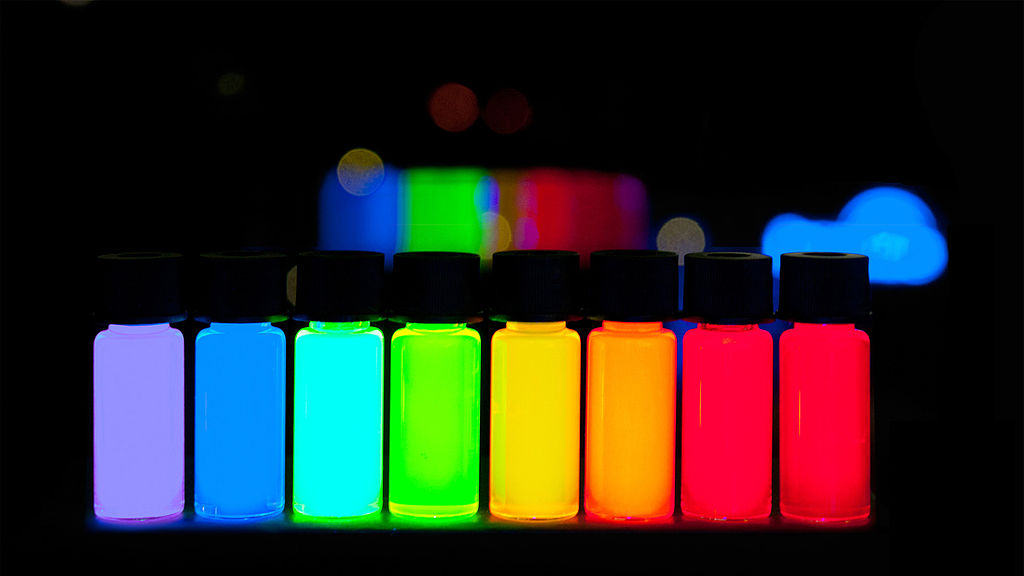A Machine Learning Solution for Designing Materials with Desired Optical Properties
Berkeley Lab researchers’ method can also quickly calculate optical properties of most materials
By Julie Chao
Understanding how matter interacts with light – its optical properties – is critical in a myriad of energy and biomedical technologies, such as targeted drug delivery, quantum dots, fuel combustion, and cracking of biomass. But calculating these properties is computationally intensive, and the inverse problem – designing a structure with desired optical properties – is even harder.
Now Berkeley Lab scientists have developed a machine learning model that can be used for both problems – calculating optical properties of a known structure and, inversely, designing a structure with desired optical properties. Their study was published in Cell Reports Physical Science.
“Our model performs bi-directionally with high accuracy and its interpretation qualitatively recovers physics of how metal and dielectric materials interact with light,” said corresponding author Sean Lubner.
Lubner notes that understanding radiative properties (which includes optical properties) is equally important in the natural world for calculating the impact of aerosols such as black carbon on climate change.
The machine learning model proposed in this study was trained on spectral emissivity data from nearly 16,000 particles of various shapes and materials that can be experimentally fabricated.
“Our machine learning model speeds up the inverse design process by at least two to three orders of magnitude as compared to the traditional method of inverse design,” said co-author Ravi Prasher, who is also Berkeley Lab’s Associate Director for Energy Technologies.
Mahmoud Elzouka, Charles Yang, and Adrian Albert, all scientists in Berkeley Lab’s Energy Technologies Area, were also co-authors.
A New Data Milestone for CUORE Experiment in Italy
CUORE collects a record volume of data for an experiment using solid crystals to search for an ultrarare process
By Glenn Roberts Jr.
Surrounded by lead and also shielded by nearly a mile of rock from the natural bombardment of particles at the Earth’s surface, the CUORE experiment has amassed the largest dataset yet for a project of its kind, which is using solid crystals to detect a theorized event that would answer a big question about how matter won out over antimatter in our universe. It would also tell us whether ghostly particles called neutrinos, which pass through most matter uninterrupted, are essentially their own antiparticles.
The data collected by CUORE, the Cryogenic Underground Observatory for Rare Events, now represents more than a “ton-year” of data (equivalent to a year’s worth of data if the crystals weighed one ton) collected by a solid-state (crystal vs. liquid or gas) detector for an experiment of its kind, based on the weight of its detector crystals. CUORE has an array of 988 detector crystals. Its crystals each weigh about 1.6 pounds, and in total they weigh about 0.8 ton.
Located at Gran Sasso National Laboratory (Laboratori Nazionali del Gran Sasso, or LNGS, operated by the Italian Nuclear Physics Institute, INFN) in central Italy, CUORE has reached a milestone in surpassing the data collected for comparable experiments by about 10 times, said Yury Kolomensky, U.S. spokesperson for the CUORE collaboration and senior faculty scientist at the U.S. Department of Energy’s Lawrence Berkeley National Laboratory (Berkeley Lab).
The experiment is designed to detect a theorized, never-before-seen nuclear decay process known as neutrinoless double-beta decay, occurring in atoms of tellurium-130, a radioactive isotope in the detector crystals. An isotope is a form of an element with more or fewer neutrons (uncharged particles) in its nucleus than is standard.
CUORE has carried out its ultrasensitive search without interruption since March 19. It operates near absolute zero, the coldest temperature in the known universe. The CUORE collaboration plans to operate the experiment for another few years, and then upgrade it to CUPID – a new, even more sensitive detector. Berkeley Lab will lead the U.S. participation in the international CUPID project.
More
- “Scientists Successfully Demonstrate a New Experiment in the Search for Theorized ‘Neutrinoless’ Process,” July 13, 2020
- “CUORE Underground Experiment in Italy Carries on Despite Pandemic,” May 12, 2020
- “The CUORE Underground Experiment Narrows the Search for Rare Particle Process,” Jan. 9, 2020
- “Experiment Provides Deeper Look into the Nature of Neutrinos,” Oct. 23, 2017
###
Founded in 1931 on the belief that the biggest scientific challenges are best addressed by teams, Lawrence Berkeley National Laboratory and its scientists have been recognized with 14 Nobel Prizes. Today, Berkeley Lab researchers develop sustainable energy and environmental solutions, create useful new materials, advance the frontiers of computing, and probe the mysteries of life, matter, and the universe. Scientists from around the world rely on the Lab’s facilities for their own discovery science. Berkeley Lab is a multiprogram national laboratory, managed by the University of California for the U.S. Department of Energy’s Office of Science.
DOE’s Office of Science is the single largest supporter of basic research in the physical sciences in the United States, and is working to address some of the most pressing challenges of our time. For more information, please visit energy.gov/science.


